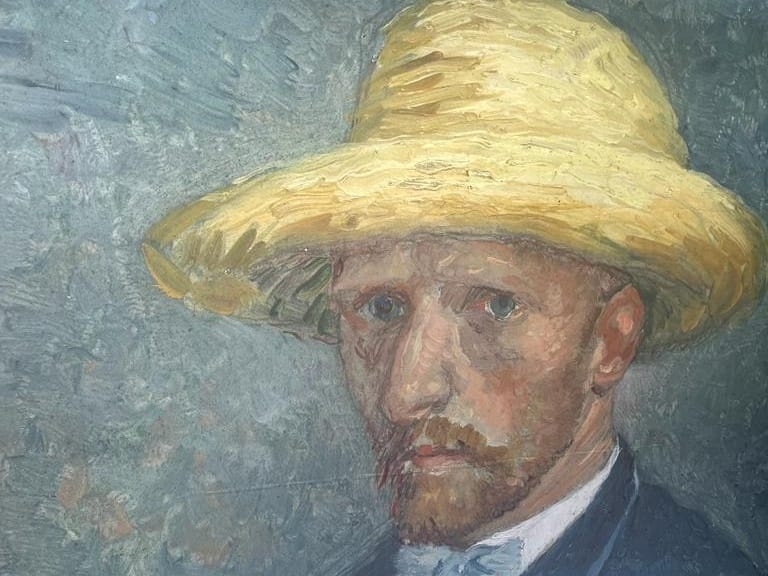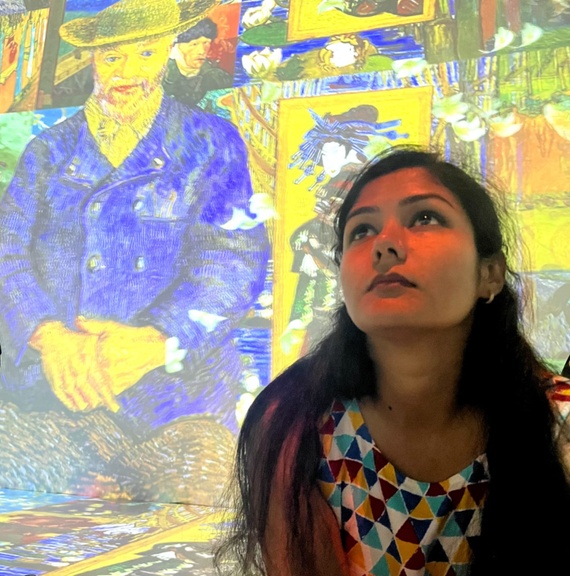I Feel — A Failure: Vincent Van Gogh
Published on Apr 17, 2023The article presents the subjective point of view from a visitor’s eyes as she examines the life and work of the world-renowned Dutch artist Vincent Van Gogh at the ongoing immersive art exhibition in Cyber City, Gurugram. The Van Gogh-360-degree is on display till April 30, 2023.
In the eyes of the world, Vincent Van Gogh is a timeless artist. His paintings, so powerful that there are moving elements in their static deception - a lively, lucid representation of life. And yet, he died a failure in his own eyes.
It is not uncommon for artists to feel underestimated and devalued for the time, energy, creativity and thoughtful insights they put into their work. Often their art goes unnoticed, and many artists vanish with time, not knowing if their art was worth anything but not Vincent.
Van Gogh, unlike other artists, knew the worth of his art. If one has to go by his life’s work and the letters he had written to his brother Theo, the artist will come across as someone who had attained an elevated state of his reality.
Born on 30 March 1853 in Zundert, North Brabant province of the Netherlands, Vincent Van Gogh was the eldest among six siblings. An extensive letter of exchange with his brother Theo gives a thorough glimpse into the troubled life of this Dutch painter and how at last on the advice of his brother, he took solace in his art.

Van Gogh was anything but delusional. He possessed the power to paint reality: of life and his life. Certainly, his life was a maze of madness but he knew he did not fail as an artist. Otherwise, his remark on his impending death about how ‘the world would have benefitted from his art had he lived longer’ carried a not-so-heartening tone. A few days back, if someone would have asked me, “What do I know of Van Gogh?”, before attending his immersive painting exhibition, I would have said: “The Artist Who Cut Off His Ear; that he had gone crazy or a madness took over him, costing his life.”
I recognize Van Gogh from my school days. In our textbook, an exercise was given to match the artist with their art. Michelangelo and Picasso were all too well known but I took quite an interest looking at ‘The Self Portrait of An Artist’, wondering why he would cut off his right earlobe and then paint himself. Did he not feel the pain or did he do that to find some sort of inspiration in his work?

To know that he had gone crazy did not come as a surprise then. However, reading about his life and work at this art exhibit, I was startled to know the iconic painter say: I feel – a failure. The 19th-century Post-impressionist painter – as he is widely recognized and known in today’s time – was no one during the time he lived and breathed. Brought up in a well-to-do upper-middle-class family, Van Gogh struggled financially in his life’s soul-searching attempt.
Abject misery and poverty never left his side till the time he lived. His only solace was his beloved brother’s support; whose undeterred faith in Vincent allowed him to carry on with his barren art–except that the art was not the reason he thought he failed; For the artist was a seeker of truth, a follower of strength and he cherished his art more than anything else. Though the toll of his mental illness, the societal pressure of not fitting in and fulfilling his many roles could be one of them.
By the time Van Gogh painted his masterpiece, The Starry Night in 1889, he embraced a dark fate. Vincent died young, in his late thirties (age 37). He shot himself and breathed his last in 1890. His illness has many names – depression and bipolar disorder – but none justify his reality like his paintings. For the world, he was a madman, but would you consider a person mad who himself acknowledges that “I put my heart and soul into my work, and I have lost my mind in the process.”

It seemed as if the artist was constantly on a quest to get close to his truest self. Hardly seen throughout his life, the artist's work is now being watched by millions of eyes worldwide – his paintings are now showcased in never-seen-before digital and dynamic avatars. His art can now be witnessed moving and melting its visitors’ hearts away with striking swirls and bold colours. To think of it, it paints not so an ideal picture of a person who lived a miserable life, mainly unhappy and only to be revered for his art after he closed his eyes forever.
Art is moving, but how it ought to move someone is a mystery. Perhaps, as a realist, Van Gogh had decoded the final element needed to make his art immortal and successful–his life. He accepted a gloomy fate well-knowing that there might not have been any escape from any of it. He put his faith more in his art than his life.
With a determined tone of a person knowing at best what he is coming to terms with, Vincent wrote to Theo: “I feel a failure. I feel that that’s the fate I’m accepting and which won’t change any more.” At his personal best, he resisted his illness the most through his art. Maybe the price was either the art or the artist. And he chose the latter.